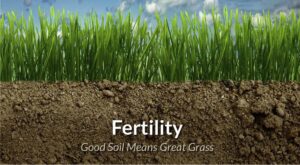
cropped farm dictionary logo.jpg
Definition: Farm Budgeting
Farm budgeting is the process of creating a detailed financial plan for agricultural operations. It involves estimating income from various sources such as crop and livestock sales, government payments, and other farm-related activities. Expenses are categorized into variable costs, which fluctuate with production levels (e.g., seeds, fertilizers, feed), and fixed costs, which remain relatively constant (e.g., mortgage payments, insurance, property taxes). Additionally, capital expenditures for long-term investments like machinery and infrastructure are considered.
The primary goals of farm budgeting are to enhance financial planning, make informed decisions, manage risks, and evaluate performance. By comparing actual financial results with the budget, farmers can identify discrepancies, track progress toward goals, and make necessary adjustments. Effective farm budgeting helps secure financing, maintain cash flow, and ensure the overall profitability and sustainability of the farm. This strategic approach is essential for optimizing resource allocation and achieving long-term agricultural success.
Fall off the barn roof and busted your keister? Life on the farm or ranch can be tough on the bum. Need a break? Laugh it off at FarmerCowboy.com, the #1 farm humor site. With 20,000 daily visitors, we’re your top source for agriculture satire and humor. Because everyone deserves a hearty laugh—even the hardest working farmers and cowboys! Join us and turn those long days into fun tales at FarmerCowboy.com.
Farm Budgeting: Maximizing Efficiency and Profitability
Introduction to Farm Budgeting
Farm budgeting is a critical component of agricultural management, enabling farmers to plan, control, and evaluate their financial activities to maximize efficiency and profitability. A well-prepared farm budget helps in making informed decisions, securing financing, and managing risks. This guide explores the importance of farm budgeting, types of budgets, key components, and best practices for creating and managing a farm budget effectively.
Importance of Farm Budgeting
Effective farm budgeting offers several benefits:
- Financial Planning: Budgeting helps farmers plan their financial activities, ensuring they allocate resources effectively to meet their goals.
- Decision Making: With a clear budget, farmers can make informed decisions about investments, expansions, and operational adjustments.
- Risk Management: A budget helps identify potential risks and develop strategies to mitigate them, enhancing the farm’s resilience.
- Performance Evaluation: Regularly comparing actual performance with the budget allows farmers to evaluate their operations and make necessary adjustments.
- Financing: A well-prepared budget can improve a farmer’s ability to secure loans and other forms of financing by demonstrating financial viability and planning.
Types of Farm Budgets
There are several types of budgets that farmers can use, each serving a different purpose:
1. Whole-Farm Budget
A whole-farm budget provides an overview of the entire farm’s financial situation, including all income and expenses. It is used for long-term planning and decision-making.
2. Enterprise Budget
An enterprise budget focuses on a specific crop or livestock operation, detailing the costs and returns associated with that particular enterprise. This type of budget helps in evaluating the profitability of individual enterprises.
3. Partial Budget
A partial budget is used to analyze the financial impact of a specific change in the farm operation, such as adopting a new technology or changing a production practice. It considers only the costs and benefits directly associated with the proposed change.
4. Cash Flow Budget
A cash flow budget tracks the inflows and outflows of cash over a specific period, usually monthly or quarterly. It helps farmers manage liquidity and ensure they have enough cash to cover their expenses.
5. Capital Budget
A capital budget is used to plan for long-term investments in assets such as machinery, buildings, and land. It helps farmers evaluate the financial viability of major investments and their impact on the farm’s overall financial health.
Key Components of a Farm Budget
Creating an effective farm budget involves several key components:
1. Income
Income includes all sources of revenue from farm operations, such as crop sales, livestock sales, government payments, and other farm-related income. It is essential to estimate income accurately to avoid overestimating financial capabilities.
2. Expenses
Expenses include all costs associated with running the farm, categorized into variable and fixed expenses:
- Variable Expenses: Costs that fluctuate with the level of production, such as seeds, fertilizers, pesticides, feed, and labor.
- Fixed Expenses: Costs that remain relatively constant regardless of production levels, such as mortgage payments, insurance, property taxes, and machinery depreciation.
3. Capital Expenditures
Capital expenditures are investments in long-term assets like machinery, equipment, buildings, and land improvements. These expenditures should be planned carefully to ensure they align with the farm’s long-term goals.
4. Cash Flow
Cash flow management involves tracking the timing of income and expenses to ensure there is enough cash available to cover expenses as they arise. This component is crucial for maintaining liquidity and avoiding cash shortages.
5. Profitability Analysis
Profitability analysis involves calculating key financial metrics such as gross margin, net income, and return on investment (ROI). These metrics help evaluate the farm’s financial performance and identify areas for improvement.
Best Practices for Farm Budgeting
To create and manage a farm budget effectively, consider the following best practices:
1. Set Clear Goals
Define clear financial and operational goals for your farm. These goals will guide your budgeting process and help you make informed decisions. Goals can include increasing profitability, expanding production, improving efficiency, or reducing debt.
2. Gather Accurate Data
Collect accurate and up-to-date data on income, expenses, and production levels. Use historical data to make realistic projections and ensure your budget reflects the current financial situation of your farm.
3. Use Budgeting Software
Utilize budgeting software or tools designed for agricultural operations. These tools can streamline the budgeting process, provide valuable insights, and help you track your financial performance more effectively.
4. Monitor and Adjust Regularly
Regularly compare your actual financial performance with the budget and make adjustments as needed. Monitoring your budget helps identify discrepancies, track progress toward goals, and make informed decisions in response to changing conditions.
5. Plan for Contingencies
Include contingency plans in your budget to account for unexpected events or changes in market conditions. Setting aside reserves or having a plan for accessing additional funds can help mitigate financial risks.
6. Seek Professional Advice
Consider seeking advice from financial advisors, accountants, or agricultural extension services. These professionals can provide valuable insights, help you refine your budget, and ensure you are making sound financial decisions.
Creating a Farm Budget: Step-by-Step Guide
Step 1: Define Your Objectives
Start by defining your farm’s financial and operational objectives. Consider both short-term and long-term goals, such as increasing crop yields, reducing costs, or expanding your herd.
Step 2: Gather Historical Data
Collect historical data on your farm’s income, expenses, and production levels. This data will serve as the basis for making realistic projections and setting benchmarks.
Step 3: Estimate Income
Estimate your farm’s income from all sources, including crop and livestock sales, government payments, and other farm-related activities. Use historical data and market trends to make accurate projections.
Step 4: Estimate Expenses
Estimate your farm’s expenses, categorizing them into variable and fixed costs. Consider all costs associated with production, including inputs, labor, maintenance, and overhead expenses.
Step 5: Plan for Capital Expenditures
Identify any planned capital expenditures, such as purchasing new equipment or making improvements to your farm infrastructure. Include these investments in your budget and evaluate their financial impact.
Step 6: Create a Cash Flow Budget
Develop a cash flow budget to track the timing of income and expenses. This budget will help you manage liquidity and ensure you have enough cash to cover your expenses throughout the year.
Step 7: Analyze Profitability
Calculate key financial metrics such as gross margin, net income, and ROI. Use these metrics to evaluate your farm’s profitability and identify areas for improvement.
Step 8: Monitor and Adjust
Regularly compare your actual financial performance with the budget and make adjustments as needed. Monitoring your budget helps you stay on track and make informed decisions in response to changing conditions.
Example of a Farm Budget
Here’s an example of a simplified farm budget for a small mixed-crop and livestock farm:
Income
- Crop Sales: $150,000
- Livestock Sales: $100,000
- Government Payments: $20,000
- Other Income: $10,000
- Total Income: $280,000
Variable Expenses
- Seeds and Plants: $20,000
- Fertilizers and Pesticides: $15,000
- Feed and Supplements: $25,000
- Labor: $40,000
- Fuel and Utilities: $10,000
- Repairs and Maintenance: $5,000
- Other Variable Expenses: $10,000
- Total Variable Expenses: $125,000
Fixed Expenses
- Mortgage Payments: $30,000
- Insurance: $5,000
- Property Taxes: $4,000
- Depreciation: $10,000
- Other Fixed Expenses: $6,000
- Total Fixed Expenses: $55,000
Capital Expenditures
- New Equipment: $20,000
- Building Improvements: $10,000
- Total Capital Expenditures: $30,000
Cash Flow
- Beginning Cash Balance: $10,000
- Net Cash Inflows: $280,000
- Net Cash Outflows: $210,000
- Ending Cash Balance: $80,000
Profitability Analysis
- Gross Margin: $155,000 (Total Income – Total Variable Expenses)
- Net Income: $70,000 (Gross Margin – Total Fixed Expenses – Capital Expenditures)
- ROI: 25% (Net Income / Total Expenses)
Conclusion
Farm budgeting is an essential tool for effective agricultural management, enabling farmers to plan, control, and evaluate their financial activities. By understanding the importance of budgeting, utilizing different types of budgets, and following best practices, farmers can enhance their financial planning, make informed decisions, and achieve their financial and operational goals. Regular monitoring and adjustment of the budget, along with professional advice, can further improve the farm’s profitability and sustainability.
How Knowledge of Farm Budgeting Can Help Farmers
Understanding farm budgeting can significantly benefit farmers by providing a structured approach to financial planning and management. With a clear budget, farmers can allocate resources more efficiently, identify potential risks, and make informed decisions that enhance their farm’s profitability and sustainability. Additionally, knowledge of farm budgeting can improve a farmer’s ability to secure financing, manage cash flow, and evaluate the financial impact of different farming practices and investments.
Resources for Further Reading
To further explore farm budgeting and related agricultural topics, visit the following resources:
Originally posted 2024-05-24 04:32:40.
Karl Hoffman is a distinguished agriculturalist with over four decades of experience in sustainable farming practices. He holds a Ph.D. in Agronomy from Cornell University and has made significant contributions as a professor at Iowa State University. Hoffman’s groundbreaking research on integrated pest management and soil health has revolutionized modern agriculture. As a respected farm journalist, his column “Field Notes with Karl Hoffman” and his blog “The Modern Farmer” provide insightful, practical advice to a global audience. Hoffman’s work with the USDA and the United Nations FAO has enhanced food security worldwide. His awards include the USDA’s Distinguished Service Award and the World Food Prize, reflecting his profound impact on agriculture and sustainability.





